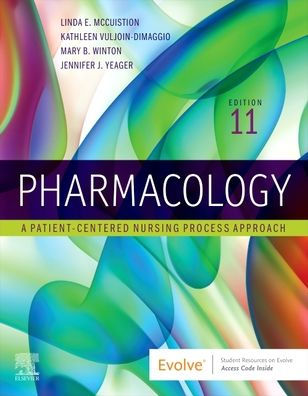Table of Contents
Unit 1: Introduction to Pharmacology
- The Nursing Process and Patient-Centered Care
- Drug Development and Ethical Considerations
- Pharmacokinetics and Pharmacodynamics
- Pharmacogenetics
- Complementary and Alternative Therapies
- Pediatric Considerations
- Geriatric Considerations
- Drugs in Substance Use Disorder
Unit 2: Pharmacotherapy and Drug Administration
- Safety and Quality
- Drug Administration
- Drug Calculations
Unit 3: Maintenance of Homeostasis
- Fluid Volume and Electrolytes
- Vitamin and Mineral Replacement
- Nutritional Support
Unit 4: Autonomic Nervous System Drugs
- Adrenergic Agonists and Antagonists
- Cholinergic Agonists and Antagonists
Unit 5: Central and Peripheral Nervous System Drugs
- Stimulants
- Depressants
- Antiseizure Drugs
- Drugs for Parkinsonism and Alzheimer’s Disease
- Drugs for Neuromuscular Disorders and Muscle Spasms
Unit 6: Mental and Behavioral Health Drugs
- Antipsychotics and Anxiolytics
- Antidepressants and Mood Stabilizers
Unit 7: Pain and Inflammation Management Drugs
- Antiinflammatories
- Analgesics
Unit 8: Antimicrobial Drugs
- Antibacterials
- Antituberculars, Antifungals, and Antivirals
- Antimalarials, Anthelmintics, and Peptides
Unit 9: Immunologic Drugs
- HIV- and AIDS-Related Drugs
- Transplant Drugs
- Vaccines
Unit 10: Antineoplastics and Biologic Response Modifiers
- Anticancer Drugs
- Targeted Therapies to Treat Cancer
- Biologic Response Modifiers
Unit 11: Respiratory Drugs
- Upper Respiratory Disorders
- Lower Respiratory Disorders
Unit 12: Cardiovascular Drugs
- Cardiac Glycosides, Antianginals, and Antidysrhythmics
- Diuretics
- Antihypertensives
- Anticoagulants, Antiplatelets, and Thrombolytics
- Antihyperlipidemics and Drugs to Improve Peripheral Blood Flow
Unit 13: Gastrointestinal Drugs
- Gastrointestinal Tract Disorders
- Antiulcer Drugs
Unit 14: Eye, Ear, and Skin Drugs
- Eye and Ear Disorders
- Dermatologic Disorders
Unit 15: Endocrine Drugs
- Pituitary, Thyroid, Parathyroid, and Adrenal Disorders
- Antidiabetics
Unit 16: Renal and Urologic Drugs
- Urinary Disorders
Unit 17: Reproductive and Gender-Related Drugs
- Pregnancy and Preterm Labor
- Labor, Delivery, and Postpartum
- Neonatal and Newborn
- Reproductive Health
- Men’s Health and Reproductive Disorders
- Sexually Transmitted Infections
Unit 18: Sexually Transmitted Infections
- Adult and Pediatric Emergency Drugs



